Economy
Canadians weary after years of brutal inflation

From the Fraser Institute
The last four-plus years have been a rollercoaster for millions of Canadians. The pandemic, which began in early 2020, quickly led to mass layoffs (most temporary) and widespread disruptions to normal life. This was accompanied by hiccups in often-fragile global supply chains, subsequently aggravated by the Russia-Ukraine war. In response to these developments, governments and central banks provided unprecedented amounts of fiscal and monetary “stimulus” over the course of 2020-21.
All of this set the stage for skyrocketing inflation and a cost-of-living crisis in many countries. As in most peer jurisdictions, inflation and living costs jumped in Canada, beginning in late-2021 and accelerating throughout 2022. Faced with the highest inflation in four decades, the Bank of Canada belatedly responded with dramatic interest rate hikes in 2022 and the first half of 2023. The central bank’s abrupt shift to a restrictive monetary policy pummelled the economy by dampening private-sector spending and real estate activity. Economic growth slowed to a crawl in 2023 and has continued to lag in 2024. The labour market has also softened, with job growth slowing and the unemployment rate rising.
The good news is that victory is in sight for the Bank of Canada’s quest to bring inflation back to its official 2 per cent target. In recent months, year-over-year increases in the overall Consumer Price Index (CPI), which measures prices for goods and services, have been running comfortably below 3 per cent compared to close to 7 per cent a couple of years ago, and inflation slowed to 2.5 per cent in July. With inflation mostly tamed, the central bank has started to lower its short-term policy interest rate, from 5 per cent in May 2024 to 4.5 per cent today. Further cuts are expected.
It’s worth summarizing how the inflation “scare” has affected the prices Canadians now pay for goods and services.
From January 2020 to June 2024, cumulative inflation amounted to 18 per cent. This captures the combined increase in prices for the hundreds of individual items in the CPI. The price of “shelter” has risen faster than prices in general. Since January 2020, the shelter component of the CPI has climbed by one-quarter. Shelter costs include rents, mortgage payments, residential fuel, electricity and water charges.
Food prices have also been on a tear. Since January 2020, the food component of the Consumer Price Index has increased by 24 per cent. According to the latest Canadian inflation report, food inflation has dropped to 2.4 per cent on a year-over-year basis, but consumers are still struggling with sticker shock at the grocery store.
The cost of transportation—a category which includes gasoline—has also marched higher, up by more than one-fifth since early 2020.
It’s clear many Canadians have been hurt by the 2021-24 inflation surge. A Statistics Canada survey conducted a few months ago found that 45 per cent of respondents reported difficulty meeting day-to-day expenses, a far bigger share than two years earlier. Those on fixed incomes and younger people striving to form separate households have been hardest hit. Meanwhile, workers whose pay hasn’t kept pace with above-normal inflation have seen their purchasing power diminish. All of this has soured the public mood and put incumbent governments on the defensive.
Fortunately, the evidence suggests that inflation will soon return to the official 2 per cent target. This should ease recent cost-of-living pressures and help bolster flagging consumer and business confidence in Canada. It can’t happen soon enough.
Author:
Business
It Took Trump To Get Canada Serious About Free Trade With Itself
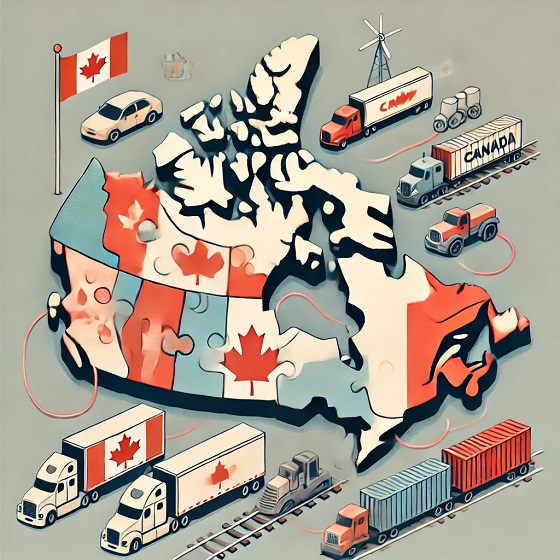
From the Frontier Centre for Public Policy
By Lee Harding
Trump’s protectionism has jolted Canada into finally beginning to tear down interprovincial trade barriers
The threat of Donald Trump’s tariffs and the potential collapse of North American free trade have prompted Canada to look inward. With international trade under pressure, the country is—at last—taking meaningful steps to improve trade within its borders.
Canada’s Constitution gives provinces control over many key economic levers. While Ottawa manages international trade, the provinces regulate licensing, certification and procurement rules. These fragmented regulations have long acted as internal trade barriers, forcing companies and professionals to navigate duplicate approval processes when operating across provincial lines.
These restrictions increase costs, delay projects and limit job opportunities for businesses and workers. For consumers, they mean higher prices and fewer choices. Economists estimate that these barriers hold back up to $200 billion of Canada’s economy annually, roughly eight per cent of the country’s GDP.
Ironically, it wasn’t until after Canada signed the North American Free Trade Agreement that it began to address domestic trade restrictions. In 1994, the first ministers signed the Agreement on Internal Trade (AIT), committing to equal treatment of bidders on provincial and municipal contracts. Subsequent regional agreements, such as Alberta and British Columbia’s Trade, Investment and Labour Mobility Agreement in 2007, and the New West Partnership that followed, expanded cooperation to include broader credential recognition and enforceable dispute resolution.
In 2017, the Canadian Free Trade Agreement (CFTA) replaced the AIT to streamline trade among provinces and territories. While more ambitious in scope, the CFTA’s effectiveness has been limited by a patchwork of exemptions and slow implementation.
Now, however, Trump’s protectionism has reignited momentum to fix the problem. In recent months, provincial and territorial labour market ministers met with their federal counterpart to strengthen the CFTA. Their goal: to remove longstanding barriers and unlock the full potential of Canada’s internal market.
According to a March 5 CFTA press release, five governments have agreed to eliminate 40 exemptions they previously claimed for themselves. A June 1 deadline has been set to produce an action plan for nationwide mutual recognition of professional credentials. Ministers are also working on the mutual recognition of consumer goods, excluding food, so that if a product is approved for sale in one province, it can be sold anywhere in Canada without added red tape.
Ontario Premier Doug Ford has signalled that his province won’t wait for consensus. Ontario is dropping all its CFTA exemptions, allowing medical professionals to begin practising while awaiting registration with provincial regulators.
Ontario has partnered with Nova Scotia and New Brunswick to implement mutual recognition of goods, services and registered workers. These provinces have also enabled direct-to-consumer alcohol sales, letting individuals purchase alcohol directly from producers for personal consumption.
A joint CFTA statement says other provinces intend to follow suit, except Prince Edward Island and Newfoundland and Labrador.
These developments are long overdue. Confederation happened more than 150 years ago, and prohibition ended more than a century ago, yet Canadians still face barriers when trying to buy a bottle of wine from another province or find work across a provincial line.
Perhaps now, Canada will finally become the economic union it was always meant to be. Few would thank Donald Trump, but without his tariffs, this renewed urgency to break down internal trade barriers might never have emerged.
Lee Harding is a research fellow with the Frontier Centre for Public Policy.
Alberta
Low oil prices could have big consequences for Alberta’s finances

From the Fraser Institute
By Tegan Hill
Amid the tariff war, the price of West Texas Intermediate oil—a common benchmark—recently dropped below US$60 per barrel. Given every $1 drop in oil prices is an estimated $750 million hit to provincial revenues, if oil prices remain low for long, there could be big implications for Alberta’s budget.
The Smith government already projects a $5.2 billion budget deficit in 2025/26 with continued deficits over the following two years. This year’s deficit is based on oil prices averaging US$68.00 per barrel. While the budget does include a $4 billion “contingency” for unforeseen events, given the economic and fiscal impact of Trump’s tariffs, it could quickly be eaten up.
Budget deficits come with costs for Albertans, who will already pay a projected $600 each in provincial government debt interest in 2025/26. That’s money that could have gone towards health care and education, or even tax relief.
Unfortunately, this is all part of the resource revenue rollercoaster that’s are all too familiar to Albertans.
Resource revenue (including oil and gas royalties) is inherently volatile. In the last 10 years alone, it has been as high as $25.2 billion in 2022/23 and as low as $2.8 billion in 2015/16. The provincial government typically enjoys budget surpluses—and increases government spending—when oil prices and resource revenue is relatively high, but is thrown into deficits when resource revenues inevitably fall.
Fortunately, the Smith government can mitigate this volatility.
The key is limiting the level of resource revenue included in the budget to a set stable amount. Any resource revenue above that stable amount is automatically saved in a rainy-day fund to be withdrawn to maintain that stable amount in the budget during years of relatively low resource revenue. The logic is simple: save during the good times so you can weather the storm during bad times.
Indeed, if the Smith government had created a rainy-day account in 2023, for example, it could have already built up a sizeable fund to help stabilize the budget when resource revenue declines. While the Smith government has deposited some money in the Heritage Fund in recent years, it has not created a dedicated rainy-day account or introduced a similar mechanism to help stabilize provincial finances.
Limiting the amount of resource revenue in the budget, particularly during times of relatively high resource revenue, also tempers demand for higher spending, which is only fiscally sustainable with permanently high resource revenues. In other words, if the government creates a rainy-day account, spending would become more closely align with stable ongoing levels of revenue.
And it’s not too late. To end the boom-bust cycle and finally help stabilize provincial finances, the Smith government should create a rainy-day account.
-

 2025 Federal Election2 hours ago
2025 Federal Election2 hours agoThe Federal Brief That Should Sink Carney
-
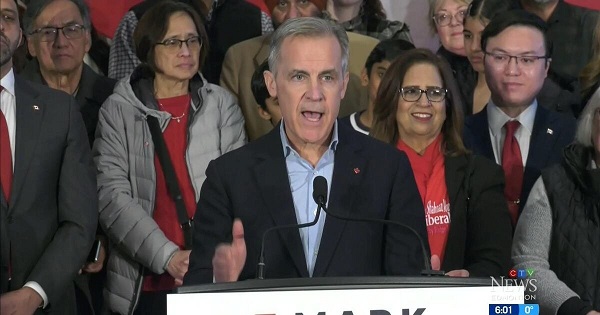
 2025 Federal Election4 hours ago
2025 Federal Election4 hours agoHow Canada’s Mainstream Media Lost the Public Trust
-

 2025 Federal Election7 hours ago
2025 Federal Election7 hours agoOttawa Confirms China interfering with 2025 federal election: Beijing Seeks to Block Joe Tay’s Election
-
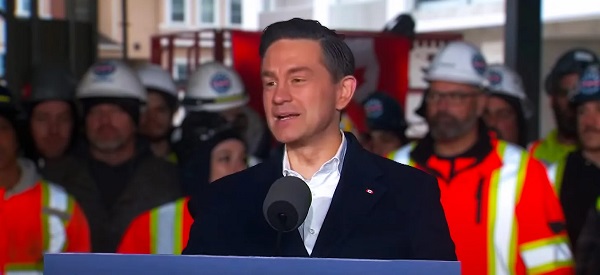
 2025 Federal Election6 hours ago
2025 Federal Election6 hours agoReal Homes vs. Modular Shoeboxes: The Housing Battle Between Poilievre and Carney
-
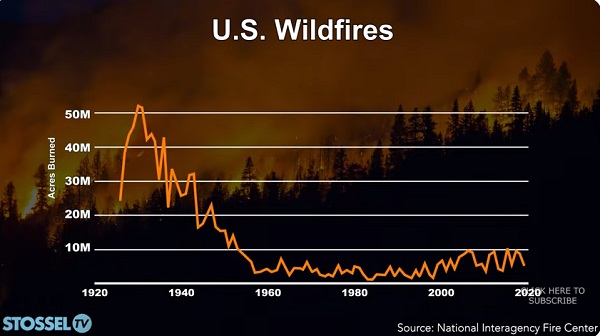
 John Stossel3 hours ago
John Stossel3 hours agoClimate Change Myths Part 2: Wildfires, Drought, Rising Sea Level, and Coral Reefs
-

 COVID-195 hours ago
COVID-195 hours agoNearly Half of “COVID-19 Deaths” Were Not Due to COVID-19 – Scientific Reports Journal
-
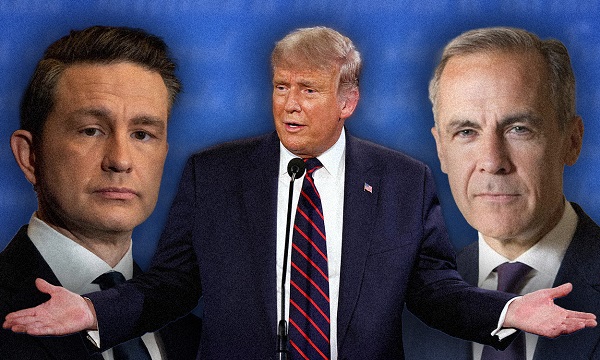
 2025 Federal Election2 days ago
2025 Federal Election2 days agoPolls say Canadians will give Trump what he wants, a Carney victory.
-
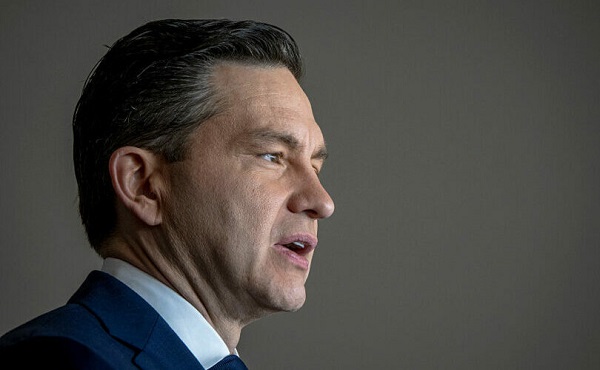
 2025 Federal Election2 days ago
2025 Federal Election2 days agoPoilievre’s Conservatives promise to repeal policy allowing male criminals in female jails


